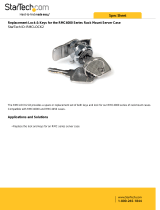
5 Removal and Replacement Procedures ..................................................................................................... 38
Preparation for Disassembly .............................................................................................................. 38
Access Panel ...................................................................................................................................... 39
Front Bezel ......................................................................................................................................... 40
Bezel Blanks ....................................................................................................................................... 41
Memory .............................................................................................................................................. 41
DIMMs ............................................................................................................................... 41
DDR3-SDRAM DIMMs ...................................................................................................... 41
Populating DIMM Sockets ................................................................................................. 42
Installing DIMMs ................................................................................................................ 43
Expansion Card .................................................................................................................................. 44
System Board Connections ................................................................................................................ 48
Drives ................................................................................................................................................. 49
Drive Positions ................................................................................................................... 49
Installing and Removing Drives ......................................................................................... 50
Removing a 5.25-inch Drive from a Drive Bay .................................................. 51
Installing a 5.25-inch Drive into a Drive Bay ..................................................... 52
Removing a 3.5-inch Drive from a Drive Bay .................................................... 53
Installing a 3.5-inch Drive into a Drive Bay ....................................................... 55
Removing and Replacing the Primary 3.5-inch Internal Hard Drive .................. 56
Fan duct ............................................................................................................................................. 59
Front Fan Assembly ........................................................................................................................... 60
Hood Sensor ...................................................................................................................................... 62
Front I/O, Power Switch Assembly ..................................................................................................... 63
Speaker .............................................................................................................................................. 65
Heat sink ............................................................................................................................................ 66
Processor ........................................................................................................................................... 68
Power Supply ..................................................................................................................................... 70
System Board ..................................................................................................................................... 71
Battery ................................................................................................................................................ 72
Type 1 Battery Holder ........................................................................................................ 73
Type 2 Battery Holder ........................................................................................................ 73
Type 3 Battery Holder ........................................................................................................ 74
Using the Small Form Factor Computer in a Tower Orientation ........................................................ 75
Appendix A Connector Pin Assignments ...................................................................................................... 76
Keyboard ............................................................................................................................................ 76
Mouse ................................................................................................................................................. 76
Ethernet RJ-45 ................................................................................................................................... 77
Serial Interface, Powered and Non-Powered ..................................................................................... 77
vii





















